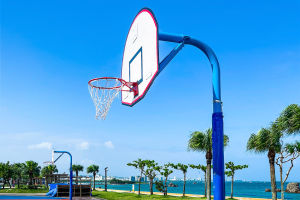Engaging in physical activities is an important part of maintaining an active lifestyle. Many people are returning to their exercise routines after a break, while others are just beginning their journey toward fitness.
One often overlooked but essential item is a suitable sports bag. Is it really just a simple accessory? Or does it play a bigger role in ensuring a smooth workout experience?
Why the Right Bag Matters
Not all bags are created equal when it comes to carrying exercise gear. A well-designed bag offers convenience, organization, and durability, making it easier to transport essentials like workout clothes, shoes, and accessories. With a variety of options available, it is important to choose one that meets personal needs in terms of space, compartments, and material quality.
Material: Durability and Functionality
The choice of material is the first factor to consider when selecting a sports bag. Many prefer water-resistant polyester or tough nylon for their resilience against wear and tear. For those looking for environmentally friendly alternatives, there are options made from recycled synthetic fibers.
Synthetic materials are not only lightweight but also prevent the buildup of unwanted odors and moisture, ensuring a fresh and clean interior. Additionally, they are easy to clean and dry quickly after washing.
Size and Compartments
Bag size varies depending on individual preferences and needs. Those who go to a workout session already dressed in their gear and return home afterward may only need a compact bag for essentials like a water bottle and towel. Others who require a change of clothes, toiletries, and accessories need a larger option with multiple compartments.
A well-organized bag with pockets for smaller items such as keys, a phone, and headphones can be a great advantage, preventing unnecessary searching and keeping everything in its place. For some, a single large compartment may suffice, while others benefit from separate sections to keep clean and used items apart.
Different Types for Different Activities
The choice of a sports bag largely depends on the activity it will be used for. A general fitness enthusiast may need a spacious bag for clothing and accessories, while someone attending a dance session might require a more compact and lightweight option.
Cyclists often opt for backpacks with ergonomic support, while those heading to a swimming session should look for bags with waterproof compartments for towels, footwear, and other essentials. Tennis players need space for their equipment, while yoga practitioners might require a bag with designated slots for mats and other props.
Style and Personalization
Beyond practicality, the appearance of a sports bag is also worth considering. Choosing a color or design that stands out can help prevent mix-ups in busy gyms or training centers. Some may prefer minimalist tones, while others might go for bold patterns or eye-catching hues. Personalization options, such as initials or unique tags, add a touch of individuality and make the bag easy to identify in a shared space.
Final Thoughts
Selecting the right sports bag enhances convenience, protects belongings, and improves the overall exercise experience. With careful consideration of material, size, compartments, and purpose, finding the perfect fit becomes much easier.


